Post Production 101
We gave our editor eight months of our life on our hard drive, handing it over with the care one takes when holding a newborn baby. read more
We gave our editor eight months of our life on our hard drive, handing it over with the care one takes when holding a newborn baby. read more
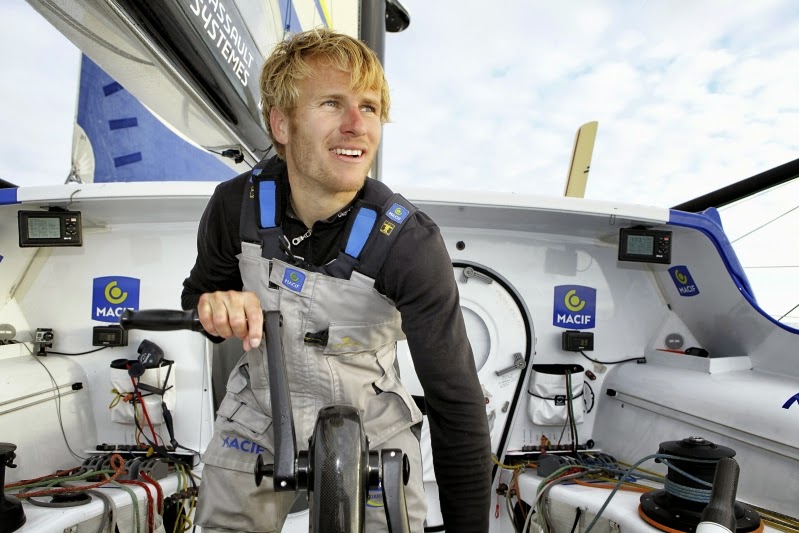
Photo: O.Blanchet
François Gabart did it again. He crossed the finish line of a singlehanded transatlantic sailing race in first position.
At 33 years of age he is a very young French sailor and like Mozart, Picasso or Messi, he is a true genius. Never had the world of singlehanded sailing seen such a talented sailor at such a young age.
As a kid François sailed around the Atlantic with his family for a year, that’s where he developed his passion for sailing. He won a lot of races on small boats as a youngster, while securing an engineering degree, but it’s singlehanded on big boats that François became a star at before he even reached 30 years of age: a rare thing in the world of sailing where experience is key.
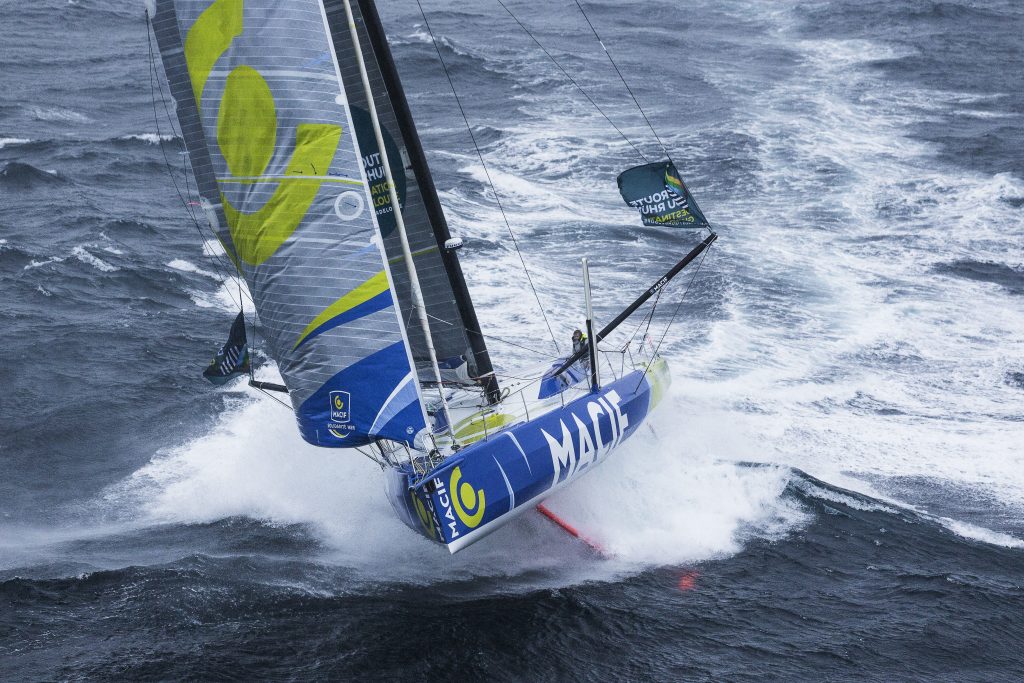
Photo: Jean Marie Liot
In 2011, at 27, he takes part to the Transat B to B, his first transatlantic race on his monohull Macif and wins it.
In 2013, he takes part to the Vendee Globe, considered the toughest singlehanded sailing race around the world on the same boat, and wins it on his first try, after an incredible duel against Armel Le Cleach, the runner up of the previous edition.
In 2014, nobody can beat him as he crosses the Atlantic victoriously during his first Route du Rhum, still on Macif.
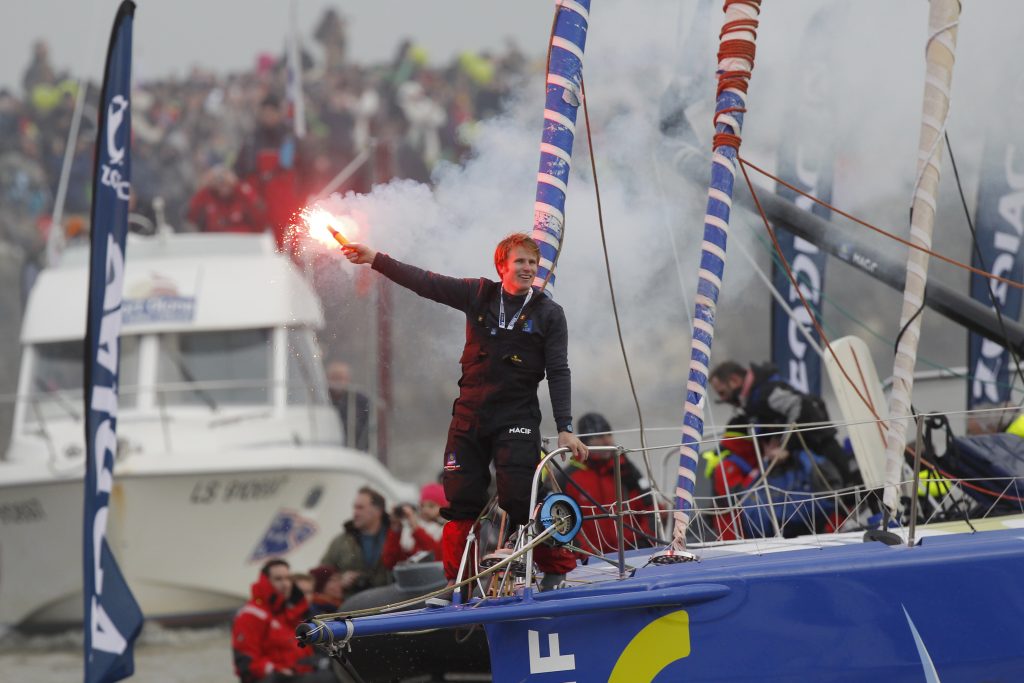
Photo: Stephane Mahe
The Vendee Globe and the Route du Rhum enjoy large media coverage in France and Gabart is now a prominent figure in the world of French sports. Because of his young age, blond hair, blue eyes and incredible achievements, the media nicknamed him “Le Petit Prince”. That’s cute and it makes a good magazine cover, but what the general public often doesn’t know is that François is an extremely hard working technician. He is very much involved in every stage of the design and building of his boats. He asks a lot of questions and writes everything down. He is the combination of a scientist and an athlete with the mental strength of a warrior.
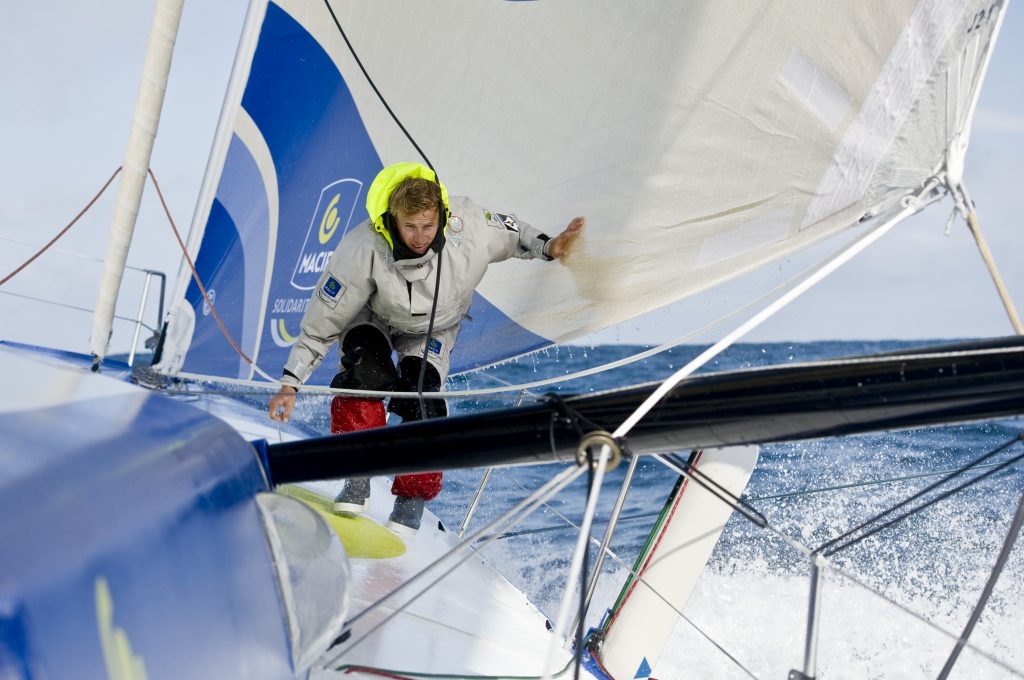
Photo: Vincent Curutchet
François Gabart has already won everything on his 60ft monohull. In 2013 he convinces his sponsor to build a giant: a 100ft trimaran (30m).
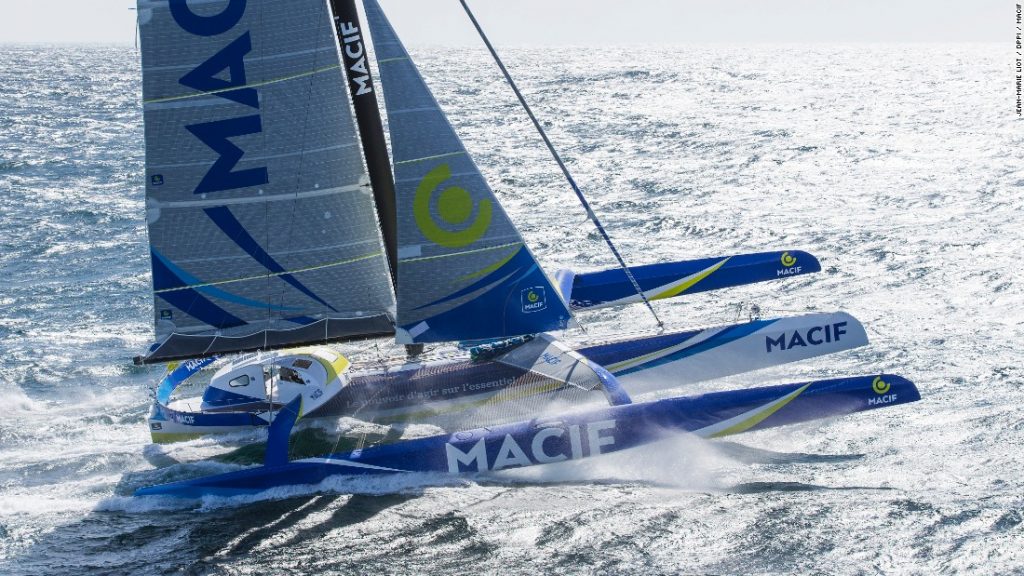
Photo: Vincent Curutchet
This completely different type of boat is a whole new ball game. Everything is bigger and requires even more physical energy. Rolling a sail in and unfurling another one out is equivalent to a hardcore one hour gym session, and has to be done up to 10 times a day. The handling of these giants also comes with a new dramatic factor: the stress level is much higher that on monohulls, as these multihulls reach hallucinating speeds of 40knots (80km/h) and can easily tip over.
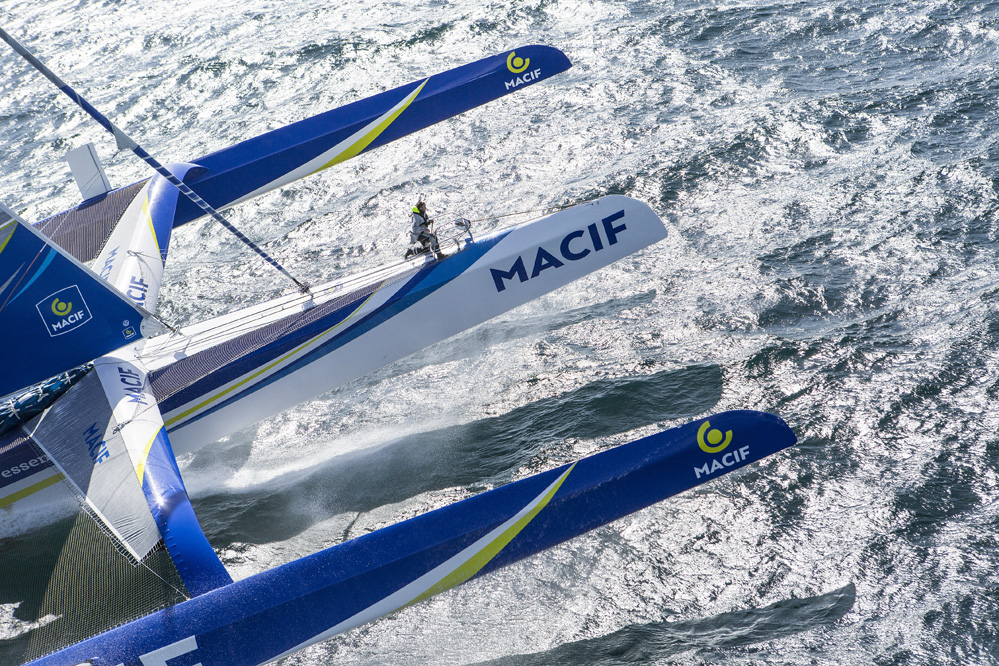
Photo: Vincent Curutchet
But François enjoys a challenge and after another incredible duel, this time against Thomas Coville a 48-year-old expert at sailing these multihull giants, he crossed the finish line of The Transat Bakerly in first position last Wednesday. On his first try. Mind-blowing.
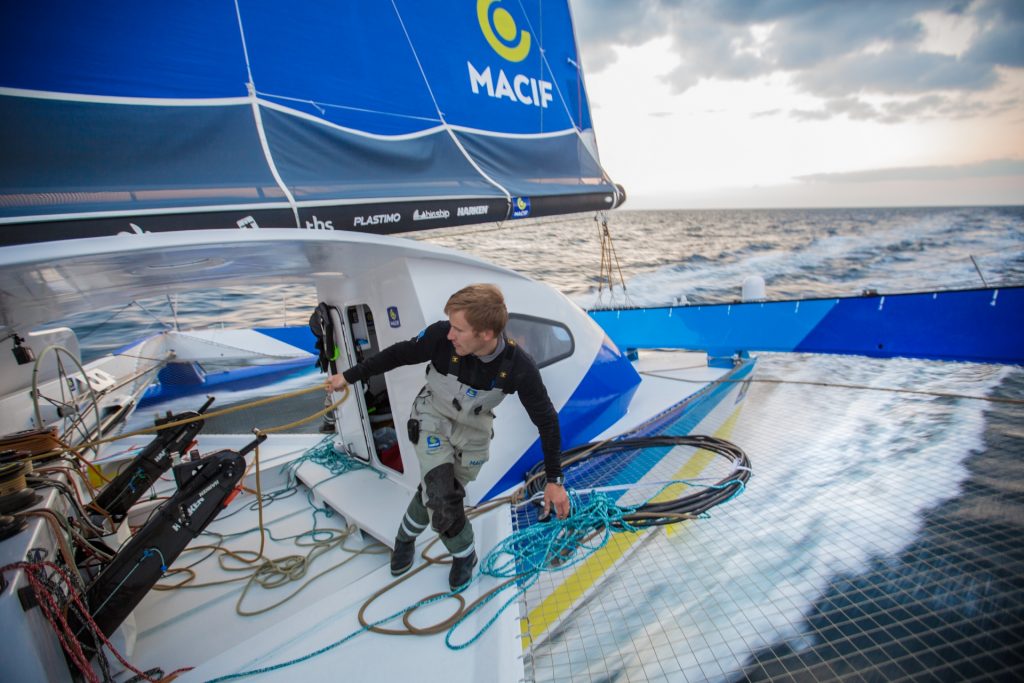
Photo: Y. Riou
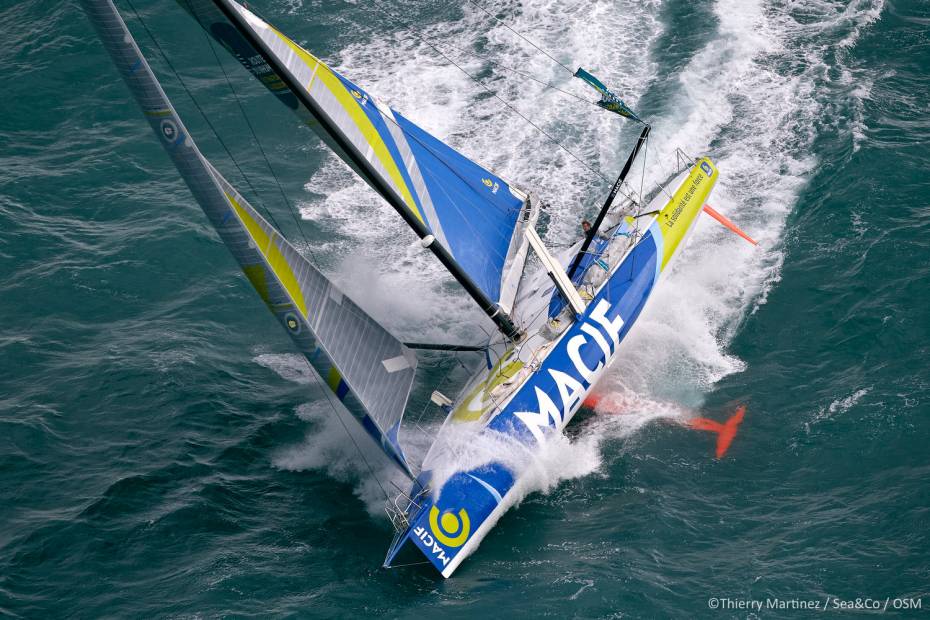
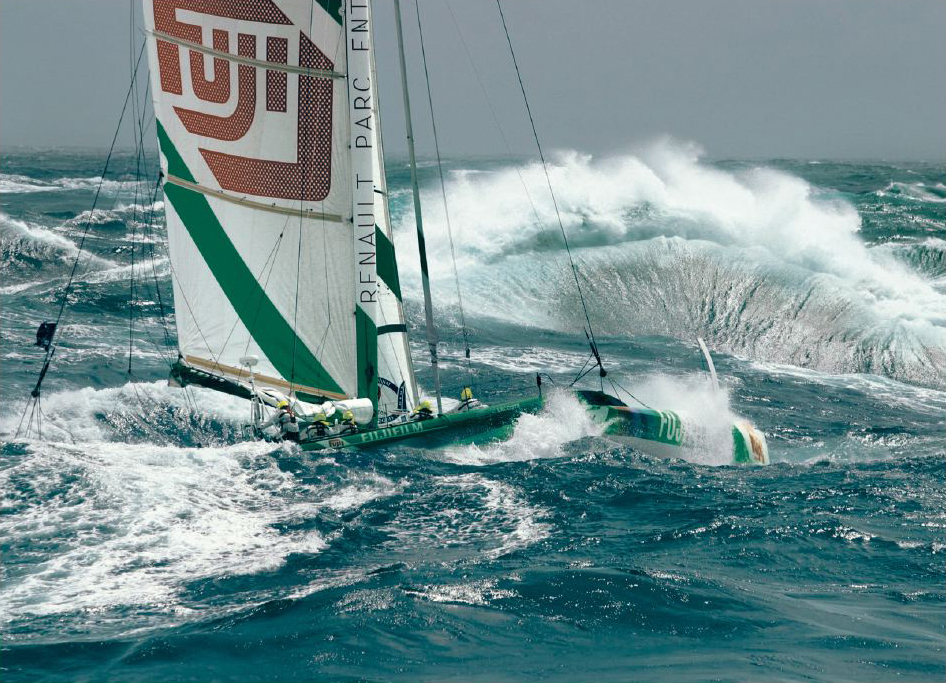
Over the years I have become a cruiser. I use my boat Dali as a home, and to travel the seas for leisure, discovering amazing coastlines, new countries and cultures. But my passion for sailing first came from racing sailboats around buoys. Sailing as a sport is a whole different world compared to cruising. It is not the most popular sport out there, although to me, sailing is the most complete sport there is. read more
My personal site Love Making Waves is moving in with us, right here on philandiva.com! From now on you will be able to view all LMW posts right here, by visiting Love Making Waves section of the website.
For those of you that are wondering what this project is about, here is a little explanation:
Three years ago, I would have never been able to imagine my life as I live it now. Back then I was sitting in my cubicle, freezing under the fluorescent lights, and looking to Google for answers read more
How to start writing again after so long? These past two years have been full of adventures for the two of us, both on sea and on land – and not all of them easy.
To sum it up, Phil and I have been working hard to whittle a shape out of the ideas and desires that flooded our heads and hearts. These past two years have been the source of reflection, brainstorming and daydreaming. read more
We write a lot about beautiful beaches in this blog. Too much. It is true that we keep on discovering remote islands, their gorgeous sand laid out in front of their jungle, and we keep on marveling at the different shades of yellow, green and blue the nature offers us. But I worry that for our readers it all sounds the same.
The nature is only half of the experience, the other half is the people we meet along the way. The different shades of characters we run into is often richer than all the colors the scenery has to offer.
More specifically, I am always amazed at the variety of sailors we encounter during our travels, or “yachties” are they are called amongst the anglo-saxon sailing community. These are people who, like Iva and I, live on their boat. One often thinks of leisure yacht owners as wealthy people with a passion for varnished wood floating on water, but there is actually a whole spectrum of yachties.
They come from all over the world. The most common nationalities sailing around SE Asia are Australians, Americans, French, German and English. But we also meet sailors from Canada, South Africa, New Zealand, Brasil, Spain, Portugal, Italy, Turkey, Belgium, Argentina, Ireland, Czech Republic and Russia.
The largest group represented is probably the retired couples in their sixties or seventies. These are usually wealthy people who had been sailing during their holidays in their home country, and decided to circumnavigate the world once retired. They’re usually the first owners of nice boats over 40 feet long, spend quite a bit of time in marinas and hire experienced people to do the maintenance. These couples are usually very welcoming and love to have young people on board to share their stories of long ocean crossings and grandchildren. What drives them is the love for sailing, travelling and meeting other sailors. Their boats are usually white, the stainless steel is shiny and they know a mechanic in every port. Their outboards engine always start on the first pull of the rope.
On the other side of the spectrum you have the budget sailors. There is no age rule for this group, you meet relatively young sailors – I say relatively young as I am considered an infant in the sailing world at 34 years of age – as well as people in the seventies. They usually don’t have much money, spent the little they had to buy their boat and use the little they make to maintain it. They know how to fix everything on their floating house, and make a living fixing other people’s boats (that often belong the category above). Their hulls are usually colorful, and a lot of innovative DIY projects can be spotted on board, that saves them buying the expensive part from the expensive dealer. They are always looking for a new job; often leave their boat on anchor in a protected bay, go work in their home country for a few months and save enough money to last them until they run out again. What drives them is their love for self-suffiency. They love to live on the margins of society.
Amongst this category you often meet the singlehanded sailors. They live and sail alone on their boat. They have spent so much time alone that they somewhat live in a parallel universe, where they are their own god and master. They love to meet people and chat. For hours on end. They mix very well with the local communities, always making friends. It always seems they need to fill the void of people on their boat. And then they sail away, alone again.
Some of these singlehanders are quite eccentric characters, that could be categorized as sea bums. Their boats are tiny and messy. You wonder how they are still afloat, yet they have sailed across many oceans on them. They have long salty beards and walk barefeet. They usually don’t mind spending these long lonesome crossings alone at sea, removed from a society that they have trouble adjusting to. Their outboards never start on the first pull of the rope.
And then there are the families. A lot of couples actually raise their children on board their boat from the youngest age. I’ve met families with up to four children on board! The children are always home-schooled. In families with a single child, he or she is usually extremely mature since they are only confronted to adults. What they gain in maturity they usually lack in social skills, as they are rarely confronted to children their age. These families on boats therefore often stick together so that their children can socialize. They usually have large boats, often catamarans with enough space for the children run around, and a steady income insured before they left everything to go sailing. Their boats are crowded with food, clothes, toys, homework notebooks and game boys.
Another category of sailors you meet a lot are the captains and crews. They don’t own their boat but sail rich people’s boats around the world. Millionaires who only take a few weeks off every year to go sailing on their yacht, and have professionals take them to the next destination they would like to sail in the meantime. These sailors know a lot about boats, as much as the owners are clueless. They sail the boat in a different way than the people who own their boat. They are responsible for it, yet don’t necessarily have this astonishing bond that the owner-captain has with his ship. They always seem freer and less worried. The boats they sail are always astonishing in size, maintenance level and sometimes in beauty.
Obviously not all yachties fit perfectly in one of these categories. Some of them belong to none, some, to a few. Iva and I often wonder which type we are going to end up as…
What unites all these different sailors is their passion for the sea, the sailing, the discovery of new countries and cultures. Despite their different backgrounds they are all in search for freedom, a special kind of freedom you can only find on the water. All of them also love that on the sea, you are your own master, no uninvited guest will come on board your boat. If you want peace, you just sail to the next deserted anchorage.
What is interesting to note is that this yachtie community basically reproduces the models of society as we know it on land. There are the rich and the poor. The loners and the large families. The generous and the stingy. The open minded ones and the ones full of prejudice. The nice ones and the mean ones. The anal ones who meticulously take care of their boats everyday and the ones that seem to live in a dump. The sociable ones and the hermits. They’re just humans, but on the sea. The one big difference with the humans on land is whatever their background, whatever the relationship they have with each other, they will always, ALWAYS help out another boat in need. They will give each other a hand in the middle of the night if they see a boat dragging your onto the reef. They will tow each other through bad weather if the engine fails. They will combine their skills to repair a sinking ship. When it comes down to helping each other out, this community reproduces the true nature of sailors: they will never let another sailor down.
Phil
Back in the water…The boat is finally moving again, gently cradling us with the soothing motion of the tranquil waters of Phang Nga Bay.
A month earlier, life on a boatyard.
It feels so good to be back on Dali and getting the boat ready for the coming year of sailing…but it feels so strange to live “on the hard”.
Dali is out of the water, sitting on land. We need to climb a ladder three meters above ground to get to the boat. I miss the motion of the boat. After months spent on Dali, we’re used to the gentle movement of the swell. But on the hard, the boat feels so unnaturally still.
We chose this small new boatyard because it is cheap, calm and relatively cool. Whatever the monsoon, NE or SW, we usually get a fresh cooling wind that limits the liters of sweat that drench us while working in the tropics.
It is difficult to explain how hard it has been to tackle the technical difficulties I have been facing since I decided to leave my comfortable and predictable job to live on a boat. When I acquired Dali, I knew how to sail and navigate, but when it came to mechanics, electrical systems, composite materials, paints, woodwork, plumbing, painting, sanding, gluing, isolating, screwing, drilling, polishing and so many more areas of expertise, I had no idea. It was scary to know that I would have to develop these skills quickly to be able to fix my boat on my own, in order to attain self sufficiency in deserted places and to try to limit the repair budget to a minimum.
I had a little insight from my years of sailing to the problems encountered on boats, and some theories about how to fix them. I had helped a lot of friends to do repairs on their boat, watched them use certain materials and tools. But clearly, the only way to improve my skills was to face the repair alone, with a lot of advice to pick from, but with my own hands and tools to operate.
Accomplishing a task for the first time on your own, with little or no guidance always involves a lot of stress.
I’ll try to illustrate this. Let’s say, you lightly kissed a rock with the bottom of the keel a few months back. Now on the hard, it’s fixing time. You must sand the area until you accomplish a smooth surface of fiberglass. That means you must know how to use a sanding machine, or just go for it. Then you need to prepare a mix of epoxy resin (two part – a resin and a hardener) and microballoon (micro sized glass bubbles used as a thickener) to fill all imperfection and, once sanded, prepare a smooth area to apply the fiberglass. This is no easy task for a beginner. Measurements must be taken, estimations are also a key. Doing this for the first time is obviously an unnatural feeling. It’s not easy to just go for it with no experience and technical learnings.
Then the epoxy resin is applied, the fiberglass cut to dimension pressed against it and absorbed in the resin. After it has dried for a while but is still sticky, epoxy/microballoon filler must be applied again, then sanded. Finally, another layer of resin and the primer paint are applied on top when the resin is still sticky. The theory seems simple, especially after you’ve seen someone do it in front of you, but until you put your hands at use, smeared with the products that you manipulate for the first time, the whole thing just seems extremely complicated to achieve.
The same feeling came upon me when I had to repair my diesel engine for the first time, only using phones and books. Or the outboard engine, that I keep fixing and discovering parts I haven’t dismantled and cleaned yet, or the engine shaft that I have to take apart on my own for the first time the other day. It often brings me back to the first business trip I did in South Korea in 2001. I was an intern in small French multimedia start-up in Hong Kong and replaced my trusting boss on a trip to Seoul. I had to meet with executives of the top Korean web businesses of the time to try to establish partnerships. It was organized in conjunction with the French Embassy and one of their translators was guiding me around the high-rise buildings of Seoul for five days. I was twenty-one years old, and terrified. I was wondering what I was doing there, what the justification for my presence on this trip was, since I had no prior experience. Everything seemed complicated and unnatural. I was putting a lot of pressure on myself, afraid of failure. But I forced myself to try.
Over the years I realized that there is absolutely no reason to be afraid of failure. It is such a natural feeling that keeps us from trying new things. The boat has been a good friend and let me experiment with the feeling. Today, I still stress out when something breaks for the first time. The other day a water pump was leaking and I had to fix it. It took three tries to dismantle it, clean it and put it back together to make it work. The frustration, the first time is annoying. The second time it is almost unbearable. But I have accepted that I might have to try it a third time, and if it doesn’t work, bring it to somebody and pay him to repair it. I’ve noticed with great surprise, that usually, the third time, it works.
Another important component of the fear of failure is the importance we put in what other people may think. What will they think of us if we can’t even succeed in a small task that is so easy for them to achieve? What will my friend, who’s worked on boats for 20 years, think of me if I live on a boat and can’t even fix a little water pump? What will my boss think of me if I fail in a task that he seems to accomplish with his eyes closed? We are often paralyzed by other people staring at us. I realized over the years that first of all: who cares? We are all the same human beings with the same fears, so why be ashamed? Second of all, I am a lot more impressed by people who try something and fail, then by people who stick to what they know best, and do it over and over again.
Since I left my comfortable job in Kuala Lumpur, I have tried my best to apply this philosophy to my everyday life. I have been trying a lot of new things without any knowledge: the refit of the boat; the filming and editing of my first documentary; I even participated to a reality TV Show based on interior design! In all these experiences, I had to teach myself how to use the tools and techniques at hand. Every time it felt like I was in front of a brick wall. I didn’t know how to start. I was afraid to start because I was worried I wouldn’t succeed. But I powered through my fears, and forced myself to do it.
Every task I tackle takes me a lot more time than it would have taken any experienced professional. The first result isn’t anywhere as good, and very far from my expectations. But I am building the necessary confidence to try again, and finally achieve a result that almost satisfies me. There is still so much more to learn. Every time I will have to achieve something new, the same feeling of fear will come back. But I will embrace it and power through. Force myself. Better try and fail than stand still…
Phil
